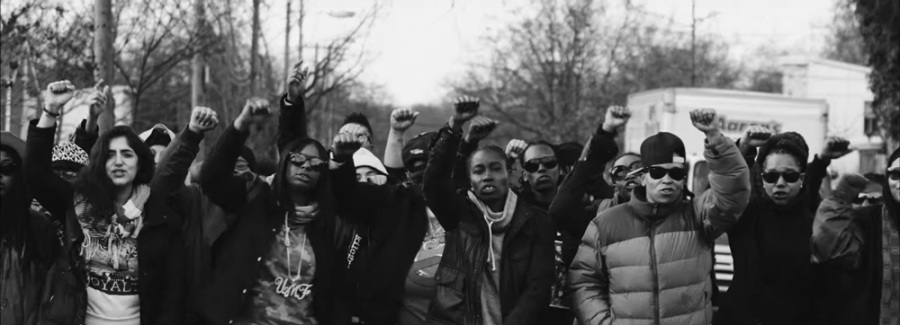In 1989, an esteemed group of East Coast rappers united behind the mic to record a funky PSA: “Self Destruction,” a plea for peace in black communities. The posse cut became known as hip-hop’s “equivalent of ‘We Are the World,'” as writer Al Shipley put it, launching inspirational remakes from other parts of the country, including Southern California, Jersey City and recently, Baltimore.
Nearly 30 years later after the classic song dropped, D.C. now has its own take on “Self Destruction” — and it comes with a dose of feminism.
A group called Resurrecting Queenz released a new version of “Self Destruction” last month. The song concludes a bloody year in the nation’s capital, with homicides up 54 percent in 2015. But it also takes a stand against another pernicious force: sexism, particularly the kind that pits women artists against each other.
D.C. hip-hop artist Katrina Blunt, aka Kenilworth Katrina, began pondering an all-female “Self Destruction” last fall. After watching a number of music documentary shows — Unsung, Behind the Music — she realized that women were saying the same thing about the hip-hop industry.
“The biggest thing I’ve seen is women, particularly in rap, talk about that it wasn’t a lot of female unity,” says Blunt, 37.
Contemporary artists say the same thing about today’s culture. “Girl rappers are afraid to work together because we get fixed in these imaginary competitions,” British MC Lady Leshurr told the Guardian in 2013. “The industry just doesn’t know what to do with women.”
Blunt thought that an all-women version of “Self Destruction” could help blow that up while addressing violence at the same time. She began recruiting rappers on social media. Over several weeks, with help from fellow artists, she wound up with 18 women spitters from the D.C. region, later bringing in six more. She corralled everyone into a recording studio in Suitland, Maryland, and the chemistry just happened, she says.
“It was no egos. It was no miscommunication, no arguing,” Blunt says.
Later, the group shot a music video at various locations in D.C., including the Watha T. Daniel library in Shaw and Blunt’s stomping grounds in Kenilworth. In the finished product, MCs from Mana to Roe.B deliver their verses while the names of black Americans killed during police encounters, followed by 2015 homicide statistics, scroll by.
The project has gotten supportive feedback since it came out in December, Blunt says. But five years ago, she wouldn’t have pursued a project like “Self Destruction.” She felt unsure about her creative direction.
“I didn’t know my audience, I didn’t know my lane. I was just all over the place with my music,” she says. Then a higher power intervened, she says, and she found her purpose. “My music now has a message, and the message is to never give up.”
Meanwhile, “Self Destruction” has sparked new friendships among the 24 “queenz,” many of whom had never met before last fall. Now, “some of them go out to brunch together,” Blunt says.
That’s one way to work toward unity among female artists.
“There are people — women — who do want to collaborate and don’t mind working with each other,” Blunt says. “This is proof.”



Pingback: Check Out Resurrecting Queenz Interview with Bandwidth.FM – Mychelle Lee | Official Site()